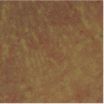(Press-News.org) WASHINGTON - Cigarette warning labels can influence a smoker to try to quit even when the smoker is trying to avoid seeing the labels, according to a survey of thousands of adult smokers in four countries published by the American Psychological Association.
Small, text-only warning labels like those on cigarette packs in the United States prompt people to think about health risks of smoking, and people who notice the warnings regularly are more likely to try to quit, the research found. Larger, more graphic warning labels like those in other countries, such as Australia, were better at getting people's attention and motivating them to attempt quitting, according to the study in the APA journal Health Psychology.
"Warning labels vary widely from country to country but it's clear that once people see the labels, the same psychological and emotional processes are involved in making people consider quitting smoking," said the study's lead author, Hua-Hie Yong, PhD, of the Cancer Council Victoria in Australia.
For smokers who said they paid attention to the labels, simply seeing them was enough to make them think about the health risks of smoking, which made them less likely to smoke a cigarette. People who didn't think much about the health risks were more likely to say that those risks were exaggerated. They were also more likely to say that they enjoyed smoking too much to give it up, according to the study. However, smokers who consciously avoided the labels by covering them up or by keeping them out of sight still reported thinking often about the health risks and about quitting.
"This just goes to prove the idea that the more one tries not to think of something, the more one tends to focus on it," said Yong.
Researchers conducted telephone surveys of over 5,000 smokers in the United States, Australia, Canada and the United Kingdom from 2007 to 2009, and then followed up with them one year later. Smokers answered a series of questions, including how many cigarettes they smoked a day and how often they noticed warning labels on cigarette packages. Researchers also asked them if warning labels made them think about smoking's health risks, if the labels made them think about quitting and if they actively tried to avoid looking at the warnings. The researchers then asked if they were considering quitting and, at the one-year follow-up, if they had attempted to quit. They collected other demographic information, such as gender, age and education level.
The sample came from the International Tobacco Control Four-Country Survey, a longitudinal study assessing the impact of tobacco control policies around the world. For this study, 43 percent of participants were men and the number of participants was about equally divided among the four countries. Participants smoked an average of 17 cigarettes a day and 37 percent reported trying to quit at least once at the one-year follow-up.
Because noticing the warnings may be the first step toward getting smokers to think about and attempt to quit, the authors suggested policymakers require that warnings be larger and more graphic on cigarette packages and that they are supplemented with mass media campaigns with similar health warnings.
INFORMATION:
Article
"Mediational Pathways of the Impact of Cigarette Warning Labels on Quit Attempts," Hua-Hie Yong, PhD, and Ron Borland, PhD, The Cancer Council Victoria, Melbourne, Australia; James F. Thrasher, PhD, University of South Carolina; Mary E. Thompson, PhD, University of Waterloo; Gera E. Nagelhout, PhD, Maastricht University and STIVORO Dutch Expert Centre on Tobacco Control, The Hague, Netherlands; Geoffrey T. Fong, PhD, University of Waterloo and Ontario Institute for Cancer Research, Toronto, Canada; David Hammond, PhD, University of Waterloo; K. Michael Cummings, PhD, Medical University of South Carolina; Health Psychology, online June 30, 2014.
Full text of the article is available from the APA Public Affairs Office and at
http://www.apa.org/pubs/journals/releases/hea-0000056.pdf.
Contacts
Australia - Hua Yong at hua.yong@cancervic.org.au, +613 9514-6283 or Ron Borland at ron.borland@cancervic.org.au, +613 9514-6291
Canada - David Hammond at dhammond@uwaterloo.ca, (519) 888-4567
The American Psychological Association, in Washington, D.C., is the largest scientific and professional organization representing psychology in the United States. APA's membership includes nearly 130,000 researchers, educators, clinicians, consultants and students. Through its divisions in 54 subfields of psychology and affiliations with 60 state, territorial and Canadian provincial associations, APA works to advance the creation, communication and application of psychological knowledge to benefit society and improve people's lives.
http://www.apa.org
If you do not want to receive APA news releases, please let us know at public.affairs@apa.org or 202-336-5700.
The bigger the better: Cigarette warning labels prompt quit attempts
2014-07-10
ELSE PRESS RELEASES FROM THIS DATE:
Radio-burst discovery deepens astrophysics mystery
2014-07-10
The discovery of a split-second burst of radio waves by scientists using the Arecibo radio telescope in Puerto Rico provides important new evidence of mysterious pulses that appear to come from deep in outer space.
The finding by an international team of astronomers, published July 10 in The Astrophysical Journal, marks the first time that a so-called "fast radio burst" has been detected using an instrument other than the Parkes radio telescope in Australia. Scientists using the Parkes Observatory have recorded a handful of such events, but the lack of any similar findings ...
Working to loosen the grip of severe mental illness
2014-07-10
A neuroscientist at Rutgers University-Newark says the human brain operates much the same whether active or at rest – a finding that could provide a better understanding of schizophrenia, bipolar disorder and other serious mental health conditions that afflict an estimated 13.6 million Americans.
In newly published research in the journal Neuron, Michael Cole, an assistant professor at the Center for Molecular and Behavioral Neuroscience, determined that the underlying brain architecture of a person at rest is basically the same as that of a person performing a variety ...
How antioxidants can accelerate cancers, and why they don't protect against them
2014-07-10
Cold Spring Harbor, NY – For decades, health-conscious people around the globe have taken antioxidant supplements and eaten foods rich in antioxidants, figuring this was one of the paths to good health and a long life.
Yet clinical trials of antioxidant supplements have repeatedly dashed the hopes of consumers who take them hoping to reduce their cancer risk. Virtually all such trials have failed to show any protective effect against cancer. In fact, in several trials antioxidant supplementation has been linked with increased rates of certain cancers. In one trial, ...
Depressed men with prostate cancer are diagnosed later stage, get less effective therapies
2014-07-10
Depressed men with localized prostate cancer were more likely to be diagnosed with more aggressive prostate cancer, received less effective treatments and survived for shorter times than prostate cancer patients who were not depressed, a UCLA study has found.
The negative outcomes may be the result of several factors such as bias against the mentally ill, depression's impact on biological cancer processes, the depressed man's lack of investment in his general health and disinterest in receiving more effective care, and missed opportunities by physicians to educate patients ...
Scientist finds link between antibiotics, bacterial biofilms and chronic infections
2014-07-10
Researchers from the University of Southern California and the Oak Crest Institute of Science have discovered the link between antibiotics and bacterial biofilm formation leading to chronic lung, sinus and ear infections. The study results, published in the current issue of PLOS ONE, illustrate how bacterial biofilms can actually thrive, rather than decrease, when given low doses of antibiotics.
"This research addresses the long standing issues surrounding chronic ear infections and why some children experience repeated ear infections even after antibiotic treatment," ...
BMSCs with Nogo-66 receptor gene silencing for repair of spinal cord injury
2014-07-10
After central nervous system injury, the increase in Nogo protein is mediated by Nogo-66 receptor gene, leading to the collapse of growth cones and inhibiting the extension of neuronal neurites. Zhiyuan Li and his team, Heibei Xingtai People's Hospital, China used RNA interference to silence Nogo-66 receptor gene expression in bone marrow mesenchymal stem cells (BMSCs), blocked the inhibitory effect of Nogo protein, promoted the process growth of neurons differentiated by transplanted cells, improved the therapeutic effects and increased the success rate of BMSCs transplantation ...
Inhibition of NgR expression reduces apoptotic retinal ganglion cells in diabetes
2014-07-10
Activation of Nogo receptor (NgR) is an essential factor of nerve regeneration inhibition, neuronal atrophy and even apoptosis. Upregulation of NgR expression is an important cause of cell apoptosis and visual extinction in some diseases including glaucoma. Whether ganglion cell apoptosis is related to NgR gene expression in diabetes mellitus remains poorly understood. Dr. Xuezheng Liu and his team, Liaoning Medical University, China interfered NgR expression in the retinal ganglion cells of rats with diabetes mellitus and found that Rho kinase expression was obviously ...
Fusion protein of single-chain variable domain fragments and myasthenia gravis
2014-07-10
Single-chain variable domain fragment (scFv) 637 is an antigen-specific scFv of myasthenia gravis and it can bind to acetylcholine receptor in the residues 67-76 of α-subunit of acetylcholine receptor. Dr. Fanping Meng and his team, College of Medicine, Yanbian University in China conjugated scFv and human serum albumin genes and detected the fusion protein in Pichia pastoris. Results showed that the fusion protein bound to acetylcholine receptors in neuromuscular junction of human intercostal muscle and the inhibition rate of fusion protein binding to acetycholine ...
How does miR-21 promote the differentiation of hair follicle-derived NCSCs into SCs?
2014-07-10
Hair follicle-derived neural crest stem cells (NCSCs) can be induced to differentiate into Schwann cells (SCs). However, the underlying regulatory mechanism during cell differentiation remains poorly understood. Dr. Yuxin Ni and her team, Hospital of Stomatology, Jilin University, China isolated NCSCs from human hair follicle and induced them to differentiate into SCs. MicroRNA (miR-21) expression was gradually increased during the differentiation of NCSCs into SCs. After transfection with the miR-21 agonist (agomir-21), the differentiation capacity of NCSCs was increased. ...
The optimal mitomycin C concentration for intact peripheral nerve structure and function
2014-07-10
Recently, local scar adhesion after laminectomy always challenges the worldwide scholars engaged in spine surgery. Mitomycin C, a classical anti-tumor drug, has been attempted to be used to effectively inhibit scar adhesion after laminectomy and some encouraging outcomes have been achieved. However, there is evidence that mitomycin C has inherent toxicity and other side effects when it is locally used. Whether mitomycin C can influence peripheral nerve structure and function remains unclear. Dr. Tao Sui and his team, the First Affiliated Hospital of Nanjing Medical University, ...









